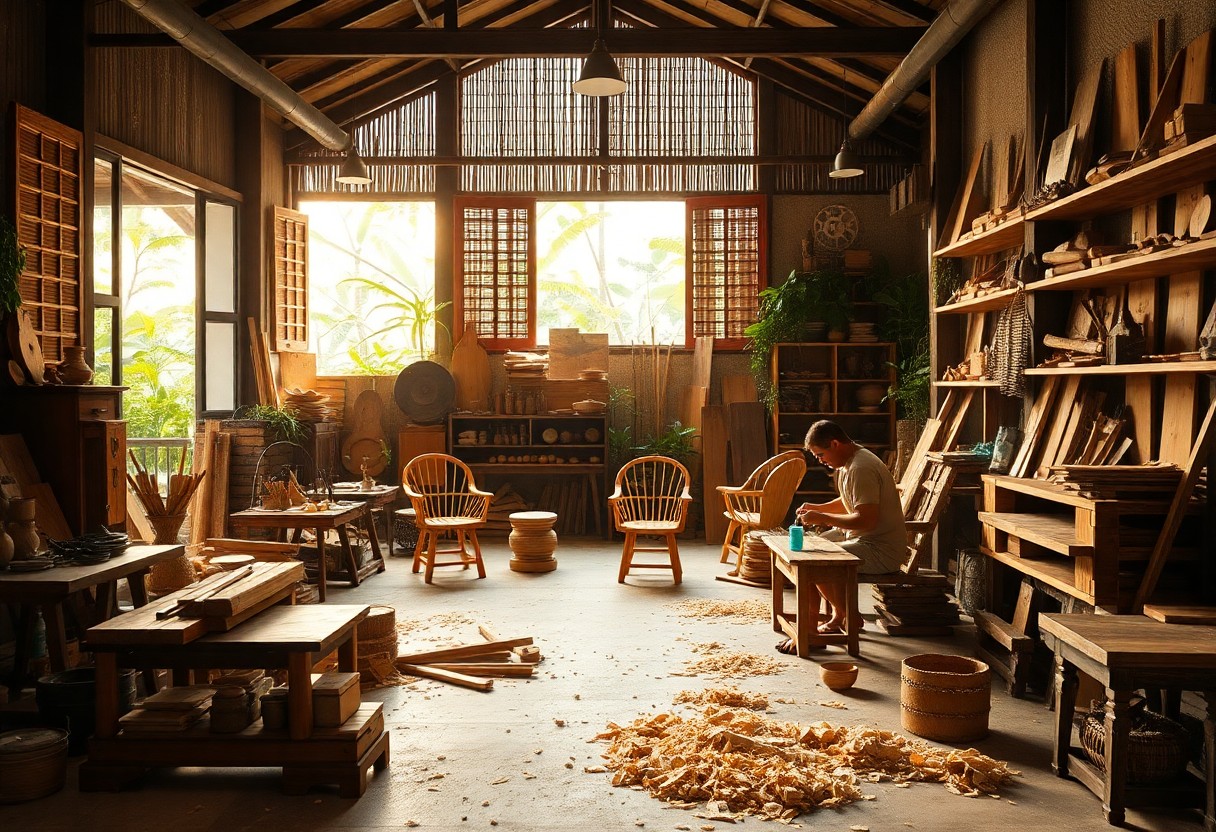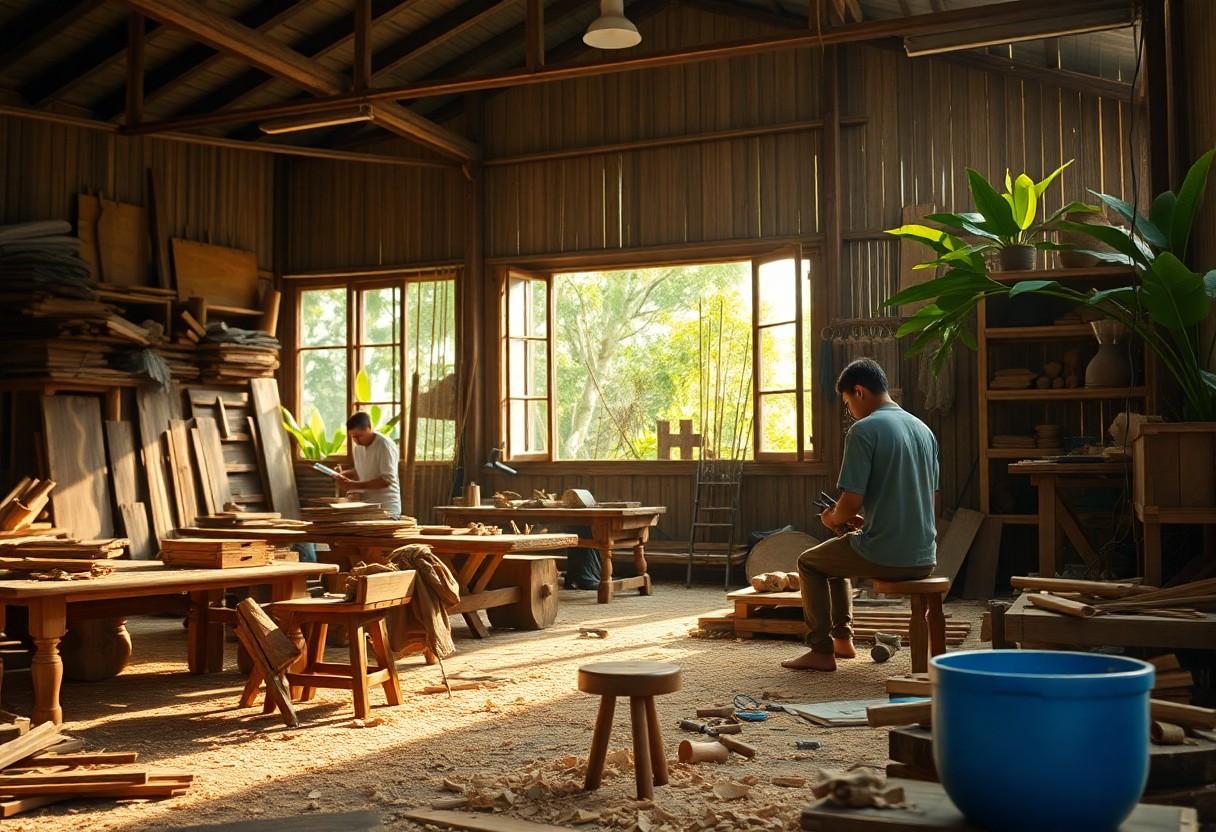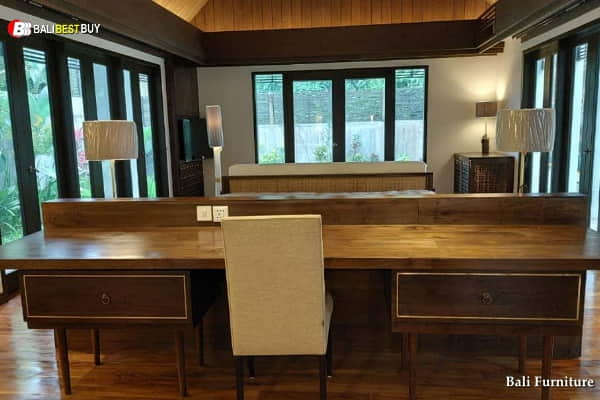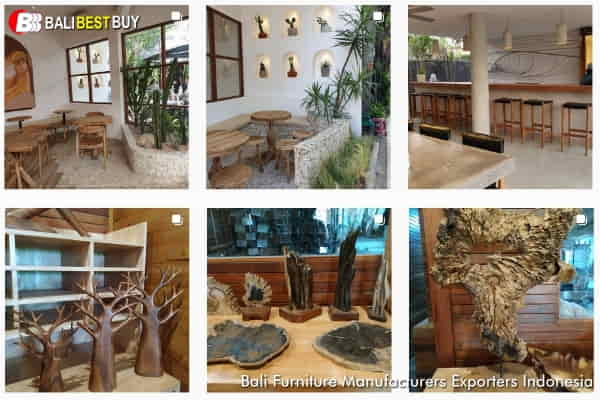With Bali rapidly evolving as a hub for innovative furniture design, you’ll find the 2025 trends reflecting a blend of traditional craftsmanship and modern sustainability. Your interest in Bali furniture will be well served by exploring eco-friendly materials, intricate hand-carved details, and minimalistic aesthetics that emphasize both functionality and artistic expression.
This year, you can expect manufacturers to focus on incorporating natural fibers, recycled wood, and smart technology, aligning with global demand for environmentally conscious yet stylish pieces. Staying updated on these trends ensures your choices remain both fashionable and forward-thinking in the dynamic Bali furniture scene.
Sustainable Materials in Bali Furniture Manufacturing
Your approach to selecting furniture in 2025 can benefit greatly from Bali’s commitment to sustainable materials. Local artisans are increasingly utilizing reclaimed wood, bamboo, and other eco-conscious resources, ensuring that your choices support environmental responsibility while adding unique character and durability to your home or business interiors.
Eco-friendly Sourcing
Against the backdrop of environmental challenges, Bali’s furniture manufacturers prioritize eco-friendly sourcing. You will find that sourcing materials from sustainably managed forests and plantations reduces your ecological footprint, while supporting ethical labor practices and conservation efforts within the region.
Biodegradable Finishes
Biodegradable finishes are becoming a hallmark of Bali’s furniture industry, offering you non-toxic, environmentally safe options that protect your furniture without harmful chemical residues. These finishes enhance natural textures while ensuring that your furniture leaves minimal environmental impact when it reaches the end of its lifecycle.
The adoption of biodegradable finishes in Bali means your furniture benefits from natural oils, waxes, and water-based varnishes that break down naturally. This reduces pollution and supports your home’s indoor air quality by avoiding volatile organic compounds (VOCs), creating a healthier living space for you and your family.

Innovative Design Trends
Even as traditional craftsmanship remains a cornerstone of Bali furniture manufacturing, innovative design trends are reshaping the industry for 2025. You’ll find a blend of natural materials with contemporary forms, creating pieces that are both functional and artistic. Designers are embracing sustainability while pushing creative boundaries, ensuring your furniture not only enhances your space but also aligns with eco-conscious values.
Minimalist Aesthetics
Below the surface of Bali’s vibrant culture, minimalist aesthetics are steadily gaining prominence in furniture design. As you explore these trends, you’ll notice clean lines, simple shapes, and a focus on crucial elements that bring calm and clarity to your living environment. This approach enhances versatility, allowing your furniture to seamlessly adapt to any décor style.
Integration of Technology
Minimalist design now integrates technology more subtly and effectively, enabling you to enjoy modern conveniences without compromising your space’s aesthetic. From smart lighting to built-in wireless charging, these innovations are crafted to enhance your daily living while maintaining the natural beauty and craftsmanship of Bali furniture.
Even with the emphasis on natural materials and handcrafting, the integration of technology in Bali furniture offers you exciting opportunities to modernize your home. Imagine furniture embedded with discreet sensors that adjust lighting or climate control based on your preferences. This fusion creates pieces that are not only visually appealing but also intuitive and responsive to your lifestyle needs, making your living space smart and stylish.

Traditional Craftsmanship Reimagined
While Bali’s furniture manufacturing deeply respects its age-old craftsmanship, 2025 sees artisans elevating these traditions by integrating new inspirations and sustainable practices. You’ll find that the rich heritage isn’t lost but reborn with techniques that honor past artistry yet appeal to contemporary tastes and eco-conscious markets.
Fusion of Modern and Traditional Techniques
After exploring classic methods, Bali’s artisans now combine them with cutting-edge technology to create unique furniture pieces. This fusion gives you products that boast intricate hand details alongside the precision and efficiency of modern machinery, ensuring superior quality and innovation in your home furnishings.
Handcrafted vs. Mass Production
Around Bali, there’s an ongoing dialogue about handcrafted furniture versus mass-produced pieces. When you choose handcrafted items, you support artisans’ expertise and individuality, making each piece distinct. Mass production offers affordability and uniformity but may lack the soul and connection that handcrafted works bring to your space.
Fusion between handcrafted artistry and selective automation is shaping the industry’s future. You’ll benefit from products where human touch ensures uniqueness, while mechanized processes maintain consistency and scalability, giving you the best of both worlds in Bali’s furniture manufacturing.
The Impact of Global Market Demands
Now, as you explore Bali furniture manufacturing in 2025, it’s clear that global market demands heavily influence design and production strategies. Manufacturers are adapting to evolving customer preferences worldwide, focusing on sustainability, quality, and uniqueness. Your choices as a buyer or business partner are driving innovation, pushing factories to integrate eco-friendly materials and advanced craftsmanship techniques. This global outlook ensures that Bali furniture not only retains its cultural authenticity but also meets international standards and tastes, allowing you to enjoy products that blend tradition with modern appeal.
Customization and Personalization
Before finalizing your furniture purchases, consider how customization and personalization options have become crucial features in Bali’s manufacturing landscape. Tailoring pieces to your specific needs and tastes is now standard, allowing you to influence materials, finishes, and designs. This personalized approach enhances the connection between you and your furniture, ensuring your interiors reflect your distinctive style while supporting local artisans who embrace flexible production methods.
Export Trends and International Markets
By tracking export trends, you’ll notice Bali furniture is gaining increasing recognition in international markets, especially in North America, Europe, and Asia. The demand for handcrafted, eco-conscious products is driving growth, allowing your access to unique Balinese pieces that align with global sustainability efforts. Manufacturers are optimizing logistics and certifications to streamline your purchasing experience and meet diverse regulatory requirements abroad.
In fact, Bali’s furniture exporters are expanding their reach by collaborating with global retailers and participating in international trade shows. This enhances your ability to source authentic products while enjoying the assurance of quality and timely delivery. The strategic push into emerging markets also means you have access to a wider variety of styles and innovations, all crafted with Bali’s renowned artisanal expertise.
The Role of Sustainability Certifications
Unlike traditional furniture production methods, Bali’s furniture manufacturers are increasingly embracing sustainability certifications to align with global environmental and ethical standards. These certifications help you identify products that not only look good but also contribute to preserving Bali’s rich natural resources and cultural heritage. By prioritizing such certifications, you support manufacturers who commit to responsible sourcing, waste reduction, and fair labor practices, which are shaping the future of sustainable furniture manufacturing in Bali.
Overview of Certifications
Alongside the rise in eco-conscious consumer demand, sustainability certifications like FSC (Forest Stewardship Council), PEFC (Programme for the Endorsement of Forest Certification), and other local Balinese eco-labels have become important. These certifications ensure that the wood is harvested responsibly, materials are renewable, and production processes minimize environmental impact. When you see these marks, you can trust that your furniture meets internationally recognized sustainability standards.
Benefits for Manufacturers and Consumers
By obtaining sustainability certifications, manufacturers gain access to broader markets and elevate their brand reputation. For you as a consumer, these certifications guarantee transparency and quality, allowing you to make informed choices that support eco-friendly practices. This mutual benefit fosters a stronger bond between you and the producers dedicated to environmental stewardship and social responsibility.
And beyond market access and trust, sustainability certifications often encourage continuous improvement among manufacturers. You will find that certified producers invest in innovative techniques to reduce waste and energy consumption, ultimately leading to better product durability and aesthetics. This means your certified furniture isn’t just greener but also crafted to offer long-term value and satisfaction.
Future Challenges in Bali Furniture Manufacturing
Not every trend brings smooth sailing; as you explore Bali furniture manufacturing’s future, it’s necessary to consider upcoming challenges. You will face hurdles related to resource availability, evolving market demands, and competition. Navigating these will require adaptation and innovation to maintain your position in this vibrant industry.
Resource Scarcity
To sustain your Bali furniture business, you must tackle resource scarcity head-on. Limited availability of high-quality natural materials, such as tropical woods, combined with growing environmental regulations, could restrict your access. Prioritizing sustainable sourcing and investing in alternative materials will help you mitigate supply issues and support long-term viability.
Competition from Global Markets
Beside local challenges, you also confront fierce competition from global manufacturers offering affordable and diverse furniture options. Staying competitive means enhancing your unique craftsmanship, leveraging Bali’s cultural appeal, and embracing digital marketing to reach discerning customers worldwide.
A deeper look into global competition reveals that international manufacturers often benefit from economies of scale, advanced technologies, and streamlined logistics, which can undercut prices. To counter this, you should focus on quality differentiation, personalized designs, and building strong brand narratives rooted in Bali’s artisanal heritage. Embracing these strategies ensures you retain your niche despite global pressures.
To wrap up
Summing up, staying informed about the latest trends in Bali furniture manufacturing for 2025 empowers you to make choices that align with both style and sustainability. By embracing innovative materials, eco-friendly practices, and artisanship, you ensure your furniture not only enhances your space but also supports ethical production. Keeping these trends in mind will help you select pieces that reflect your personal taste while contributing positively to the environment and local communities.


